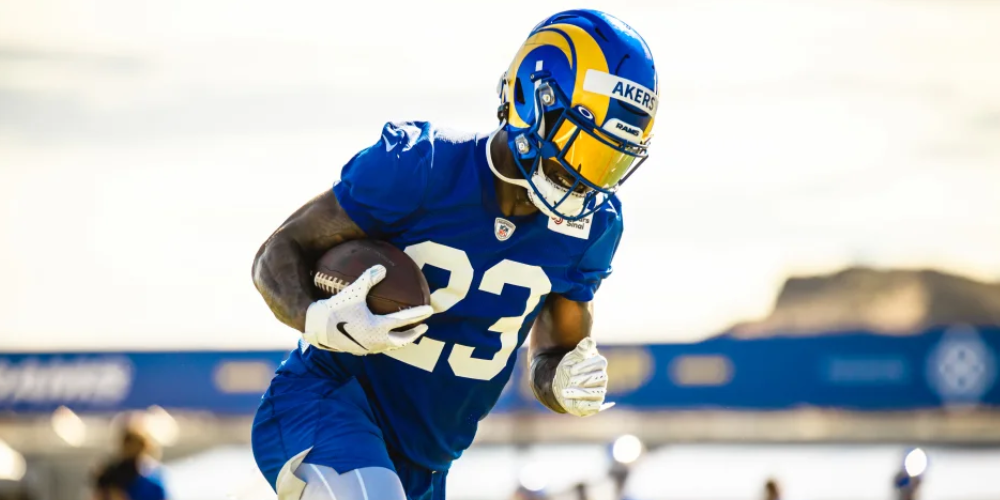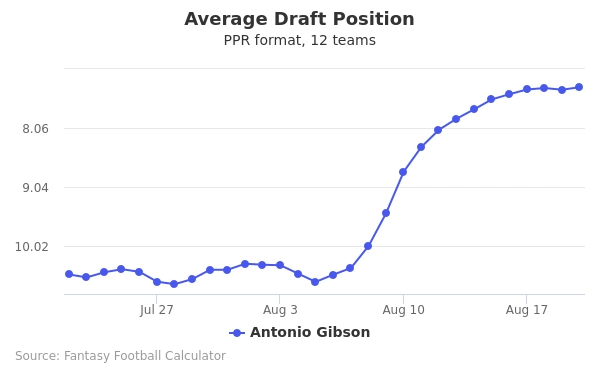In recent years fantasy football enthusiasts have become endeared to rookie running backs in an unhealthy manner, mostly due to the first-year success of players like Ezekiel Elliott, Alvin Kamara, and Saquon Barkley. While there are several examples of rookie running backs having failed when placed in similar roles (Kerryon Johnson, Ronald Jones, Samaje Perine) the value of a rookie back with an iota of hope to take on a starting role has become astronomical thanks to success stories like Kamara, Barkley, and Elliott. Though the dangers of chasing a rookie receiver or tight end are well-known, there’s a blind spot for the running back position, as the case could be made for any back regardless of skillset to become “the next Kamara”. As we’ve seen on several occasions, NFL coaching staffs tend to trust veteran backs over rookies nine times out of ten, yet we as fantasy managers believe that once a back turns 26 they are washed up and ready to be replaced (and sometimes this is the case, just ask David Johnson). With several leagues set to draft in the next couple of weeks, consider the advice of this article when you’re considering Antonio Gibson as your RB2.
Antonio Gibson, Washington Football Team
With Derrius Guice gone there is now a massive opportunity for Gibson to take over as the lead back in Washington. The 2020 third-round pick was already a valued pickup in dynasty leagues, as his size (6’1, 230 lbs) and speed (4.39) combination made him an intriguing player for a Washington offense that was already looking light on playmakers. As a hybrid receiver/running back for the University of Memphis last season Gibson tallied 1,104 scrimmage yards while scoring 12 touchdowns. Gibson is a true home run threat whenever he touches the ball and with Guice released many folks believe that he could be the lead back for Washington this season ahead of veteran Adrian Peterson. The rookie has seen his ADP rise steadily throughout the month of August, leaping up nearly two full rounds since Guice’s departure.
It’s easy to understand why a fantasy manager would fall in love with a player like Gibson. He’s exciting, new, and has a huge opportunity at his feet. However, it’s worth noting that Gibson only carried the ball 33 times in his college career, so expecting him to immediately take over the lead role for this offense is a massive oversight. Though HC Ron Rivera has lightly compared Gibson to his former player Christian McCaffrey, this comparison even in a literal sense suggests that Gibson should be destined for a platoon role this season. In 2017 (McCaffrey’s rookie season), Carolina’s touch distribution was weighted much heavier towards veteran Jonathan Stewart (58.2% backfield share) than their first-round pick McCaffrey (34.4%). While CMC caught 80 passes that season, beefing up his total fantasy points significantly, it’s unlikely that Gibson could do the same considering he only caught 44 total passes in college. In a backfield that should be controlled by Peterson and a more experienced receiving back like Bryce Love, Gibson could be a bit of an afterthought this season. It’s best to avoid him at his current ADP.
Research more about Antonio Gibson in our Fantasy Forecast article.
Clyde Edwards-Helaire, Kansas City Chiefs
Damien Williams has opted out, giving 2020 first-round pick Clyde Edwards-Helaire free reign in the Chiefs backfield. The former LSU standout was taken on the merit of his breakout 2019 season, during which he displayed the ability to become a true three-down back. Based on Edwards-Helaire’s opportunity to usurp the touches vacated by both Williams and LeSean McCoy, as well as the success that we saw Kareem Hunt have as the starter for the Chiefs, his current ADP is justified to be as high as it is. Yet, while we’ve seen players in Edwards-Helaire’s position succeed with an astonishingly high conversion rate in recent years, something feels a bit off this time around. For the bulk of the offseason, the Chiefs coaching staff seemed keen on the idea of a 50/50 split between Williams and Edwards-Helaire prior to the veteran’s decision to opt-out. Though nothing has happened yet, it wouldn’t be out of character for the team to bring in a veteran like Devonta Freeman to take some of the load off of the rookie’s shoulders, similarly to how McCoy was brought in late into last preseason. Even if the Chiefs do stand pat, drafting Edwards-Helaire at his current ADP is a risky proposition, as the rookie is coming off of draft boards as the RB6 ahead of players like Derrick Henry, Josh Jacobs, and Joe Mixon. Though CEH’s upside is enormous in a prolific Chiefs offense, it’s always a risky proposition to invest your first pick in a rookie. We must also remember that unlike Elliott and Barkley, Edwards-Helaire was not a top-five draft selection, which means that the Chiefs have little pressure to feed him a full plate worth of touches if they don’t feel like it.
D’Andre Swift, Detroit Lions
While there are many folks who will be out on Swift simply because he’s on the Lions, a team that seems to kill the dreams of a young running back every other year (too soon Kerryon?), the actual danger associated with him should be the fact that he may be destined for a committee role on an offense that may not be very running back-friendly. Though many viewed Swift as the most well-rounded back in the 2020 class due to his proficiency as a receiver, the former Georgia standout was passed over by the Chiefs in favor of Clyde Edwards-Helaire and fell to Detroit a few picks later. As we know Kerryon Johnson is still on the Lions roster and will certainly have a role in this backfield. While Johnson has missed 14 games in his first two seasons, the 2018 second-round pick has long been viewed as a potential three-down back for the Lions, best displaying his upside as a rookie when he tallied 854 yards from scrimmage. Still only 23 years old, Johnson still has room to grow as a player. Given his familiarity with Detroit’s offensive system, it’s entirely possible that the former Auburn star remains the lead back for the Lions ahead of the rookie Swift. At 5’11, 215 lbs, Johnson is also the more likely candidate to take on a role as the red zone back for the Lions, stealing much-needed scoring opportunities from Swift. Though it’s very possible that Swift’s receiving prowess is enough to keep him working ahead of Johnson on the majority of downs, he could easily disappoint fantasy managers who are taking him at his current ADP of RB29.
Cam Akers, Los Angeles Rams

With Henderson, Akers, Malcolm Brown, and John Kelly all lined up to pick up carries this fall, investing in any one of these players as an RB3 is a risky proposition. In general, committee approaches have been unkind to rookies, as we’ve seen with players like Ronald Jones, Justice Hill, and Aaron Jones in recent years. While Akers is an incredibly talented back, his uncertain volume and role for passing downs make him a huge bust candidate at his fifth-round price tag.

